The Best Bluetooth Car Diagnostic tool is one that accurately identifies and helps resolve vehicle issues by communicating with your car’s ECU, offering convenience and valuable insights into your vehicle’s health. At CAR-TOOL.EDU.VN, we understand the importance of having the right tools for automotive diagnostics. Whether you’re a seasoned mechanic or a DIY enthusiast, having access to reliable diagnostic information is essential. Explore our extensive range of automotive tools and resources today to empower your vehicle maintenance journey. With diagnostic scanners, code readers, and professional diagnostic software, you’ll be able to enhance your vehicle’s performance and maintain its overall health.
Contents
- 1. Understanding Bluetooth Car Diagnostic Tools
- 1.1. What is a Bluetooth Car Diagnostic Tool?
- 1.2. How Does a Bluetooth Car Diagnostic Tool Work?
- 1.3. What are the Benefits of Using a Bluetooth Car Diagnostic Tool?
- 1.4. What are the Limitations of Bluetooth Car Diagnostic Tools?
- 1.5. What Are The Key Features To Look For In A Bluetooth Car Diagnostic Tool?
- 2. Identifying Your Diagnostic Needs
- 2.1. What Type of Car Owner Are You?
- 2.2. What Are Your Common Automotive Issues?
- 2.3. What Specific Functions Do You Need?
- 2.4. What Level of Detail Do You Require?
- 2.5. What is Your Budget?
- 3. Top Bluetooth Car Diagnostic Tools on the Market
- 3.1. vLinker MC+
- 3.2. OBDeleven
- 3.3. TopDon TopScan
- 3.4. OBDLink CX
- 3.5. OBDLink MX+
- 3.6. UniCarScan UCSI-2100
- 3.7. vLinker FD+
- 4. Detailed Comparison of Top Bluetooth Car Diagnostic Tools
- 4.1. Feature Comparison Table
- 4.2. Performance Metrics
- 4.3. User Reviews and Ratings
- 4.4. Expert Opinions and Comparisons
- 4.5. Long-Term Reliability and Support
- 5. How to Choose the Right Bluetooth Car Diagnostic Tool for You
- 5.1. Re-Evaluate Your Needs
- 5.2. Match Features to Your Vehicle
- 5.3. Prioritize User-Friendliness
- 5.4. Consider Future Needs
- 5.5. Read Detailed Reviews
- 6. Advanced Features and Capabilities
- 6.1. Bi-Directional Control
- 6.2. Live Data Streaming
- 6.3. Access to Technical Service Bulletins (TSBs)
- 6.4. Advanced Coding and Programming
- 6.5. Cloud-Based Diagnostics
- 7. Maintaining and Updating Your Bluetooth Car Diagnostic Tool
- 7.1. Regular Software Updates
- 7.2. Keeping the App Updated
- 7.3. Storing the Tool Properly
- 7.4. Cleaning the OBD2 Connector
- 7.5. Following Manufacturer Recommendations
- 8. Where to Buy Bluetooth Car Diagnostic Tools
- 8.1. Online Retailers
- 8.2. Automotive Parts Stores
- 8.3. Tool Suppliers
- 8.4. Directly from Manufacturers
- 8.5. Consider CAR-TOOL.EDU.VN
- 9. Common Mistakes to Avoid
- 9.1. Ignoring Compatibility
- 9.2. Overlooking User Reviews
- 9.3. Neglecting Software Updates
- 9.4. Overspending on Unnecessary Features
- 9.5. Not Seeking Expert Advice
- 10. Frequently Asked Questions (FAQs)
- 10.1. What Type of Car Diagnostic Tool Is Suitable for My Car?
- 10.2. What Are the Basic Car Repair Tools That I Need?
- 10.3. How to Choose a Car Diagnostic Tool?
- 10.4. How Often Should I Use a Car Diagnostic Tool?
- 10.5. Can a Car Diagnostic Tool Fix My Car?
- 10.6. What Should I Do If I Don’t Understand the Diagnostic Codes?
- 10.7. Are Bluetooth Car Diagnostic Tools Safe to Use?
- 10.8. Can Bluetooth Car Diagnostic Tools Damage My Car?
- 10.9. What Are the Alternative Car Diagnostic Tools?
- 10.10. Where Can I Find More Information About Car Diagnostic Tools?
1. Understanding Bluetooth Car Diagnostic Tools
1.1. What is a Bluetooth Car Diagnostic Tool?
A Bluetooth car diagnostic tool is a device that connects to your car’s OBD2 port and communicates wirelessly with your smartphone, tablet, or laptop to read and interpret diagnostic information from the vehicle’s computer system. According to a study by Grand View Research, the global automotive diagnostics market is expected to reach $46.9 billion by 2027, driven by the increasing complexity of vehicle systems and the need for advanced diagnostic solutions.
1.2. How Does a Bluetooth Car Diagnostic Tool Work?
Bluetooth car diagnostic tools work by plugging into the OBD2 port of your vehicle, which is typically located under the dashboard. Once connected, the tool uses Bluetooth to transmit data to a paired device, such as a smartphone or tablet. This data can then be interpreted using a dedicated app, providing insights into the vehicle’s health and performance.
1.3. What are the Benefits of Using a Bluetooth Car Diagnostic Tool?
Using a Bluetooth car diagnostic tool offers several benefits, including:
- Convenience: Wireless connectivity allows for easy use without the need for cables.
- Cost-effectiveness: These tools are generally more affordable than dedicated handheld scanners.
- Portability: Compact size makes them easy to store and transport.
- Real-time data: Access to live engine data and performance metrics.
1.4. What are the Limitations of Bluetooth Car Diagnostic Tools?
While Bluetooth car diagnostic tools offer numerous advantages, they also have some limitations:
- Dependence on a smartphone or tablet: Requires a compatible device and app to function.
- Security concerns: Wireless connectivity may pose security risks if not properly secured.
- Limited advanced features: May not offer the same level of functionality as professional-grade scanners.
- Compatibility issues: Some tools may not be compatible with all vehicle makes and models.
1.5. What Are The Key Features To Look For In A Bluetooth Car Diagnostic Tool?
When selecting a Bluetooth car diagnostic tool, consider the following key features:
- Compatibility: Ensure the tool supports your vehicle’s make and model.
- Diagnostic capabilities: Look for features such as reading and clearing trouble codes, live data streaming, and advanced diagnostics.
- User-friendliness: Choose a tool with an intuitive app interface and easy-to-navigate menus.
- Connectivity: Ensure stable Bluetooth connectivity for reliable data transmission.
- Customer support: Opt for a brand with responsive customer support and regular software updates.
2. Identifying Your Diagnostic Needs
2.1. What Type of Car Owner Are You?
Understanding your level of automotive expertise and typical diagnostic needs will help you choose the right Bluetooth car diagnostic tool. Are you a:
- DIY Enthusiast: You enjoy performing basic maintenance and repairs on your vehicle.
- Professional Mechanic: You require advanced diagnostic capabilities for complex repairs.
- Casual User: You only need a tool for occasional troubleshooting and maintenance.
2.2. What Are Your Common Automotive Issues?
Consider the types of automotive issues you frequently encounter. Do you often deal with:
- Engine Problems: Diagnosing and resolving engine-related issues.
- Transmission Issues: Identifying and addressing transmission problems.
- Electrical Faults: Troubleshooting electrical system malfunctions.
- Sensor Malfunctions: Detecting and replacing faulty sensors.
- Emissions Problems: Addressing issues related to vehicle emissions.
2.3. What Specific Functions Do You Need?
Determine the specific functions you require from a Bluetooth car diagnostic tool. Do you need to:
- Read and Clear Trouble Codes: Identify and clear diagnostic trouble codes (DTCs).
- View Live Data: Monitor real-time engine data and performance metrics.
- Perform Advanced Diagnostics: Conduct in-depth diagnostics for specific vehicle systems.
- Reset Service Lights: Reset maintenance reminders and service indicators.
- Perform Bi-Directional Control: Activate or test specific vehicle components.
2.4. What Level of Detail Do You Require?
Consider the level of detail you need from diagnostic information. Do you require:
- Basic Fault Code Information: Simple descriptions of trouble codes and potential causes.
- Detailed Diagnostic Reports: Comprehensive reports with detailed analysis and repair recommendations.
- Access to Technical Service Bulletins (TSBs): Information on common issues and recommended fixes from the vehicle manufacturer.
- Wiring Diagrams: Detailed schematics of vehicle electrical systems.
2.5. What is Your Budget?
Determine your budget for a Bluetooth car diagnostic tool. Prices can range from affordable entry-level options to more expensive professional-grade tools. Set a budget that aligns with your needs and financial constraints. According to a survey by RepairPal, the average cost of car maintenance and repairs can range from $500 to $1,000 per year, making a diagnostic tool a worthwhile investment.
3. Top Bluetooth Car Diagnostic Tools on the Market
3.1. vLinker MC+
The vLinker MC+ is praised for its user-friendly interface and comprehensive diagnostic capabilities. It is compatible with a wide range of third-party apps, making it a versatile choice for various users. The clear display of labeled lights helps with easy connection to apps.
- Pros: Clear display, easy to use, compatible with multiple apps.
- Cons: Wide choice of apps may require time to find the right one.
- Key Features: Comprehensive diagnostics, live data, fault code reading.
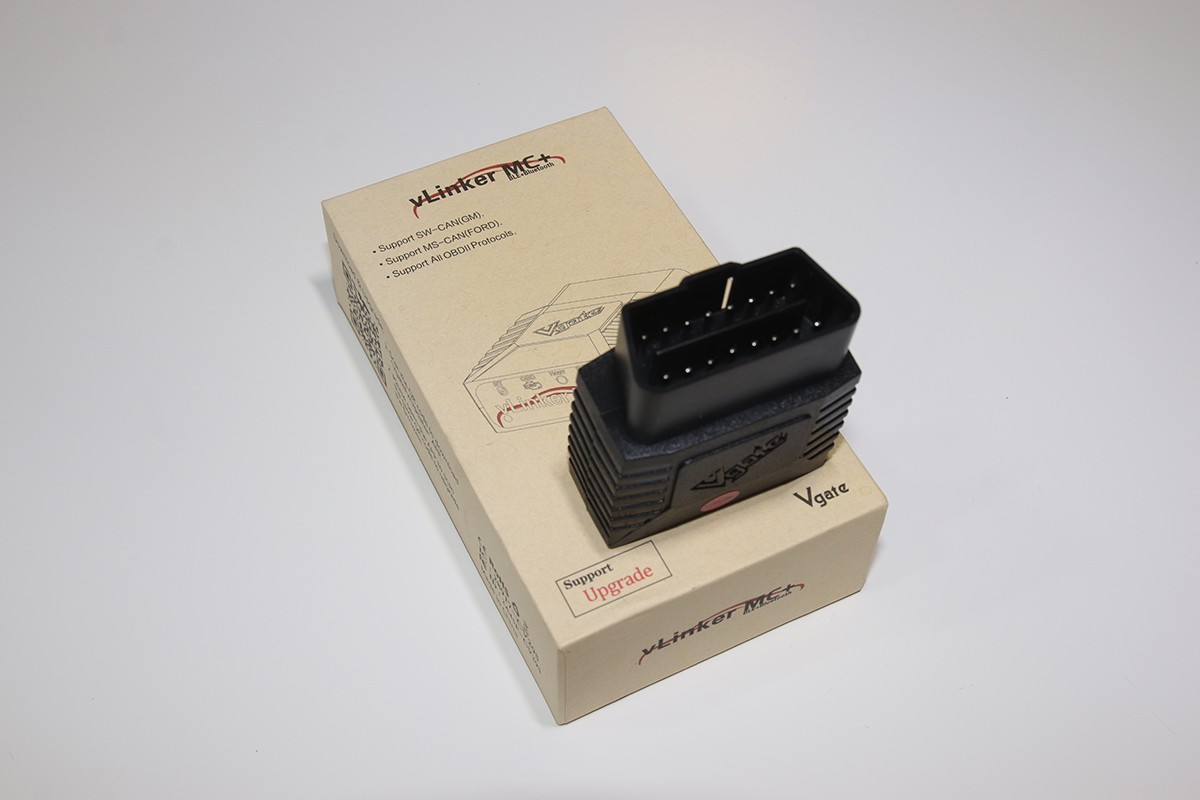 vlinker MC bluetooth obd2 scanners
vlinker MC bluetooth obd2 scanners
3.2. OBDeleven
The OBDeleven is tailored for VAG (Volkswagen Audi Group) vehicles and offers advanced features such as one-click apps for customizing vehicle settings. It provides in-depth scans of various systems, making it a favorite among VAG enthusiasts.
- Pros: Simple to use, in-depth scanning for VAG vehicles.
- Cons: Better suited for VAG, BMW, and a few other makes.
- Key Features: One-click apps, fault code identification, live data (on some makes).
 OBDeleven OBD2 scanners
OBDeleven OBD2 scanners
3.3. TopDon TopScan
The TopDon TopScan is known for its excellent dedicated software for finding faults and its assortment of Hot Functions. It is designed to appeal to both DIY users and professional mechanics.
- Pros: Excellent software for fault finding.
- Cons: Doesn’t work on 32-bit Android phones.
- Key Features: Hot Functions (oil service reset, battery reset), diagnostic trouble code scanning.
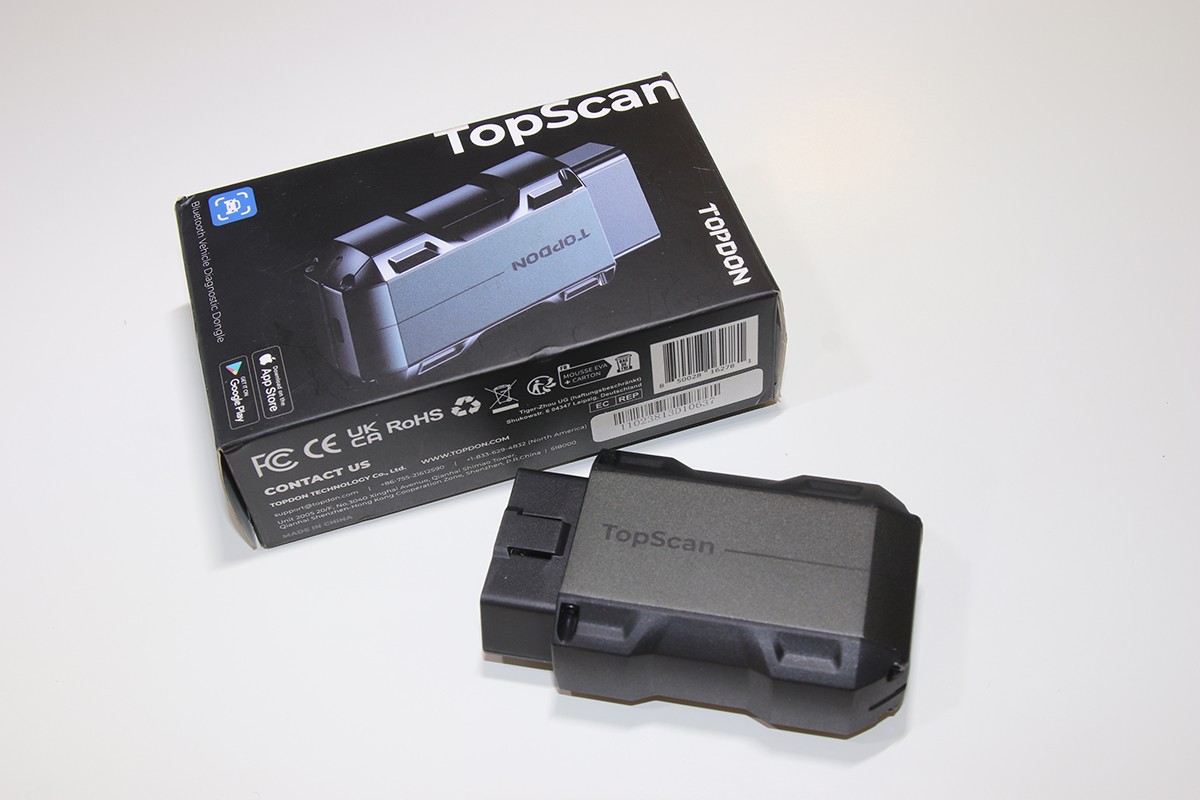 topdon topscan obd2 bluetooth scanners
topdon topscan obd2 bluetooth scanners
3.4. OBDLink CX
The OBDLink CX is a compact and user-friendly tool that offers a free app and compatibility with other apps like BimmerCode. It provides useful readings for engine RPM, speed, and battery voltage.
- Pros: Free app, works with other apps.
- Cons: Very small device, difficult to unplug from OBDII port.
- Key Features: Dashboard option, trip logging, live data graphs.
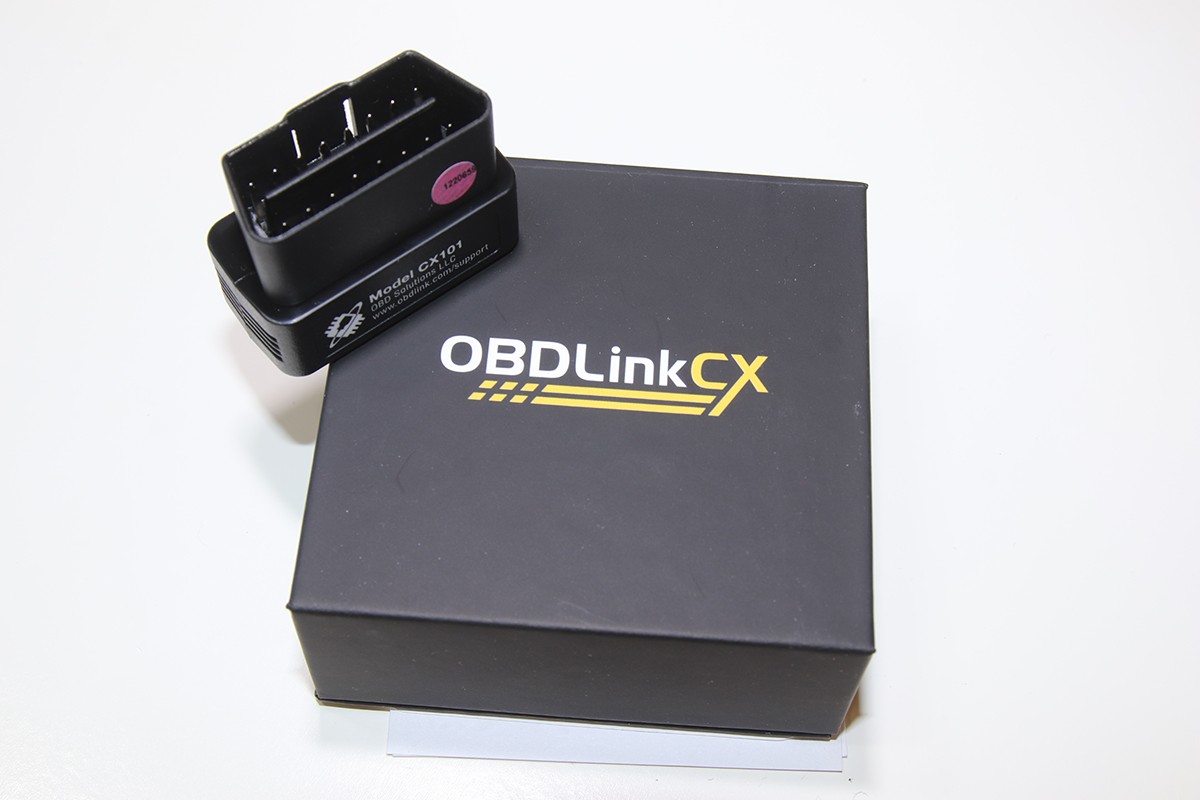 obd2 bluetooth scanner from obdlink cx
obd2 bluetooth scanner from obdlink cx
3.5. OBDLink MX+
The OBDLink MX+ is a high-end option that offers enhanced diagnostics and numerous free features. It is designed for users who want to dig deeper into their vehicle’s systems.
- Pros: Free app with enhanced diagnostics.
- Cons: More expensive, not much better than the CX version for basic use.
- Key Features: Enhanced diagnostics, live data analysis, performance functions.
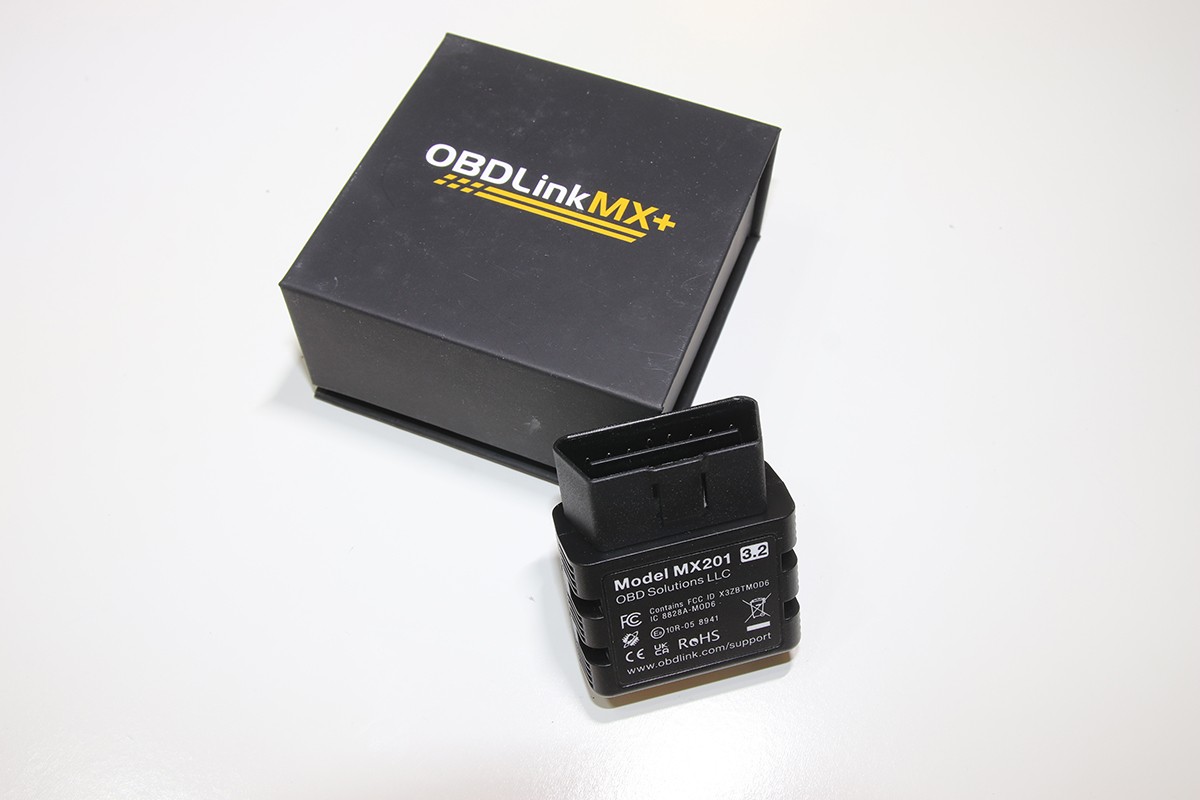 OBD link MX obd2 bluetooth scanner
OBD link MX obd2 bluetooth scanner
3.6. UniCarScan UCSI-2100
The UniCarScan UCSI-2100 works with a wide range of apps, including dedicated and generic options. It offers comprehensive detail and fast connection to phones or laptops.
- Pros: Big choice of apps, compact design.
- Cons: Wide choice of apps may seem bewildering.
- Key Features: Trouble code reading, freeze-frame data, live data analysis.
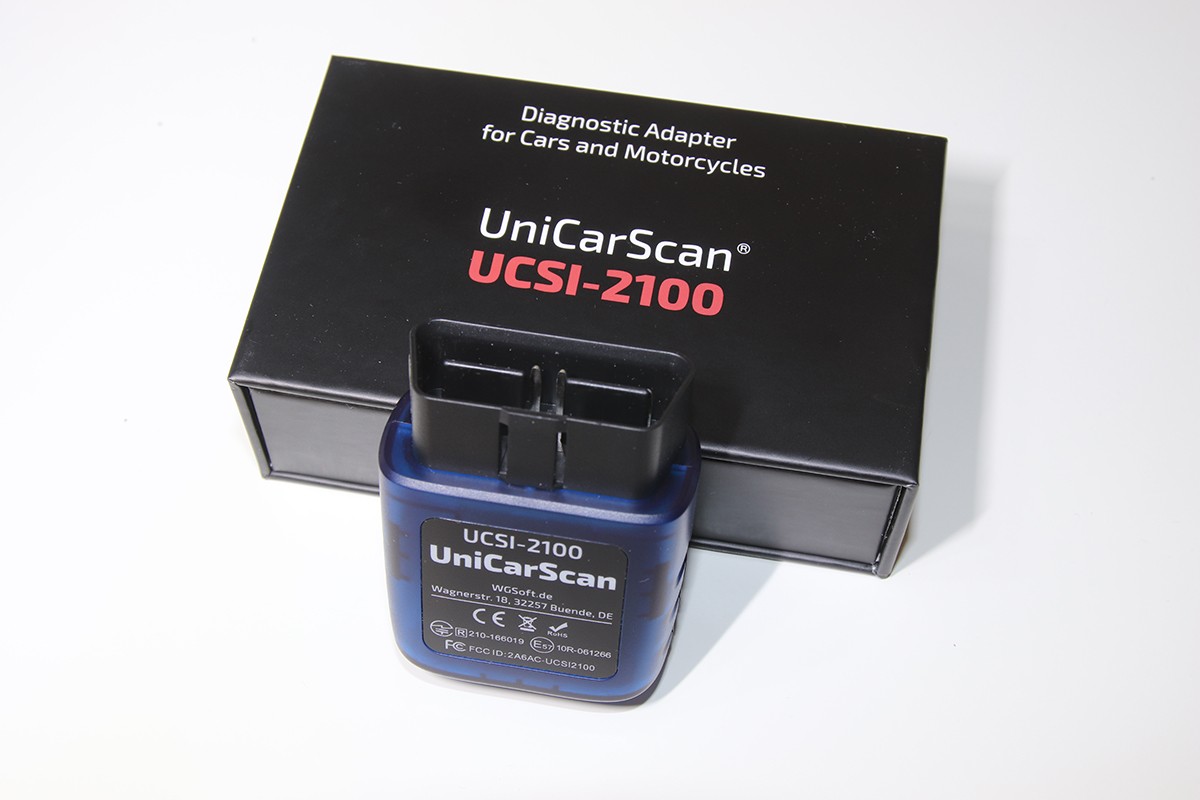 unicarscan obd2 bluetooth scanners
unicarscan obd2 bluetooth scanners
3.7. vLinker FD+
The vLinker FD+ is supported by a wide range of third-party apps and offers in-depth information on faults and live data. It is a good introductory tool for diagnostics.
- Pros: Supported by many apps.
- Cons: Choosing the right app can be challenging.
- Key Features: Fault analysis, live data retrieval.
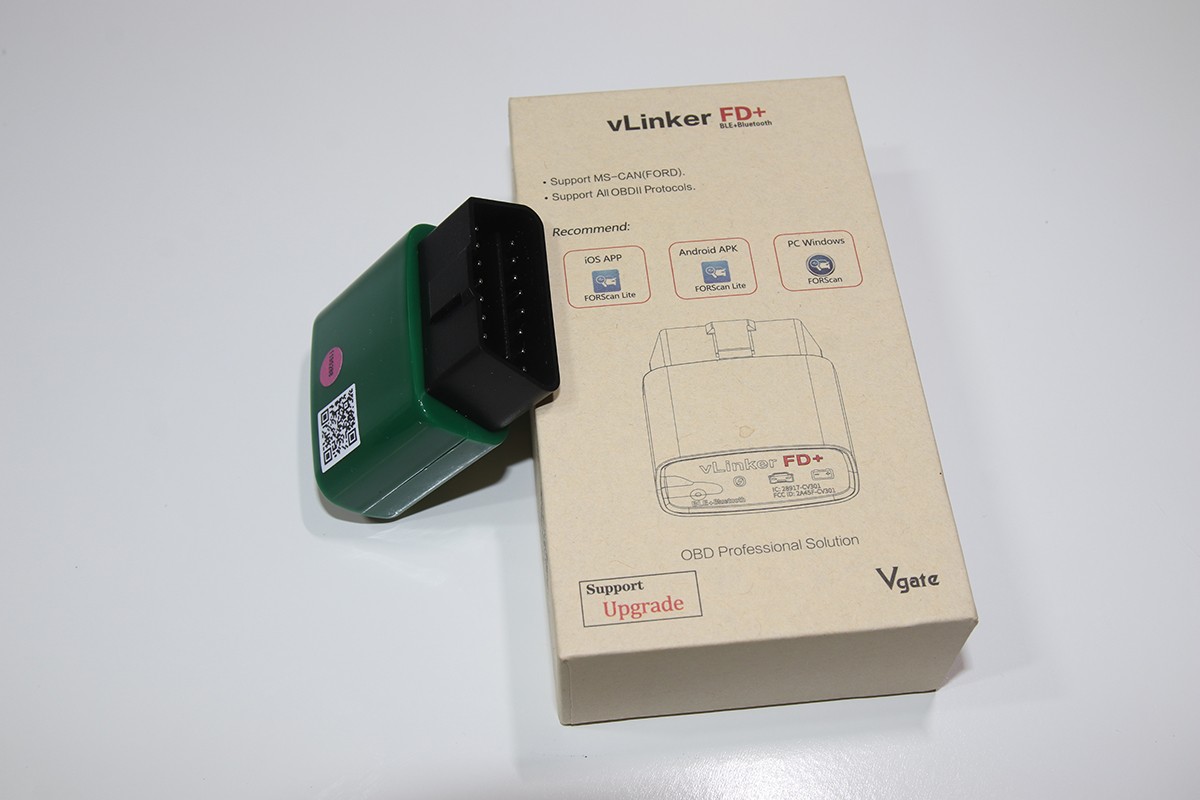 vlinker fd obd2 scanner
vlinker fd obd2 scanner
4. Detailed Comparison of Top Bluetooth Car Diagnostic Tools
4.1. Feature Comparison Table
| Feature | vLinker MC+ | OBDeleven | TopDon TopScan | OBDLink CX | OBDLink MX+ | UniCarScan UCSI-2100 | vLinker FD+ |
|---|---|---|---|---|---|---|---|
| Compatibility | Wide range | VAG, BMW | Wide range | Wide range | Wide range | Wide range | Wide range |
| App Compatibility | Multiple third-party apps | Dedicated app | Dedicated app | Free app, BimmerCode | Free app | Multiple apps | Multiple third-party apps |
| Advanced Diagnostics | Yes | Yes (with Pro) | Yes | No | Yes | Yes | Yes |
| Live Data | Yes | Yes (on some makes) | No | Yes | Yes | Yes | Yes |
| Fault Code Reading | Yes | Yes | Yes | Yes | Yes | Yes | Yes |
| Reset Functions | Yes | Yes (with Pro) | Yes | No | Yes | Yes | Yes |
| User-Friendliness | High | Medium | Medium | High | High | Medium | Medium |
| Price Range | $59.99 | $88.34 | $69.99 | $79.99 | $139.95 | $79.99 | $49.99 |
4.2. Performance Metrics
Consider performance metrics such as scanning speed, accuracy, and reliability when evaluating Bluetooth car diagnostic tools. User reviews and independent tests can provide valuable insights into real-world performance. A study by the National Institute for Automotive Service Excellence (ASE) found that accurate diagnostics are crucial for efficient and effective vehicle repairs, highlighting the importance of reliable diagnostic tools.
4.3. User Reviews and Ratings
User reviews and ratings offer valuable perspectives on the strengths and weaknesses of different Bluetooth car diagnostic tools. Look for common themes and recurring issues in user feedback to make an informed decision. Websites like Amazon, Reddit, and automotive forums can provide a wealth of user reviews and ratings.
4.4. Expert Opinions and Comparisons
Consult expert opinions and comparisons from automotive professionals and industry experts. These sources often provide in-depth analysis and evaluations of Bluetooth car diagnostic tools, helping you narrow down your options. Publications like “Car and Driver,” “Popular Mechanics,” and automotive blogs offer expert reviews and comparisons.
4.5. Long-Term Reliability and Support
Evaluate the long-term reliability and support offered by the manufacturer. Consider factors such as warranty coverage, software updates, and customer support availability. A tool with a solid warranty and responsive customer support can provide peace of mind and ensure you get the most out of your investment.
5. How to Choose the Right Bluetooth Car Diagnostic Tool for You
5.1. Re-Evaluate Your Needs
Based on the information gathered, re-evaluate your specific diagnostic needs and priorities. Consider the types of automotive issues you frequently encounter, the functions you require, and your budget.
5.2. Match Features to Your Vehicle
Ensure that the Bluetooth car diagnostic tool you choose is compatible with your vehicle’s make, model, and year. Check the manufacturer’s compatibility list or consult with a knowledgeable retailer to confirm compatibility.
5.3. Prioritize User-Friendliness
Choose a tool with an intuitive app interface and easy-to-navigate menus. A user-friendly tool will save you time and frustration, especially if you’re not an experienced mechanic.
5.4. Consider Future Needs
Think about your future diagnostic needs and choose a tool that can grow with you. Opt for a tool with advanced features and capabilities that you may need in the future, such as bi-directional control or access to technical service bulletins.
5.5. Read Detailed Reviews
Take the time to read detailed reviews from other users and experts. Pay attention to both positive and negative feedback to get a balanced perspective on the tool’s strengths and weaknesses.
6. Advanced Features and Capabilities
6.1. Bi-Directional Control
Bi-directional control allows you to send commands to the vehicle’s computer system to activate or test specific components, such as fuel injectors, solenoids, and relays. This feature can be invaluable for diagnosing complex issues and verifying repairs.
6.2. Live Data Streaming
Live data streaming provides real-time access to engine data and performance metrics, such as RPM, temperature, and sensor readings. This information can help you identify anomalies and diagnose issues that may not trigger trouble codes.
6.3. Access to Technical Service Bulletins (TSBs)
Access to technical service bulletins (TSBs) provides valuable information on common issues and recommended fixes from the vehicle manufacturer. TSBs can help you diagnose and repair issues more quickly and effectively.
6.4. Advanced Coding and Programming
Advanced coding and programming features allow you to customize vehicle settings, program new keys, and perform other advanced functions. These features are typically found in professional-grade diagnostic tools.
6.5. Cloud-Based Diagnostics
Cloud-based diagnostics allow you to store and access diagnostic data in the cloud, making it easy to share information with other mechanics or access it from multiple devices. This feature can improve collaboration and streamline the diagnostic process.
7. Maintaining and Updating Your Bluetooth Car Diagnostic Tool
7.1. Regular Software Updates
Regular software updates are essential for maintaining the accuracy and reliability of your Bluetooth car diagnostic tool. Updates often include new features, bug fixes, and compatibility improvements.
7.2. Keeping the App Updated
Ensure that the app you use with your Bluetooth car diagnostic tool is always up to date. App updates often include new features, bug fixes, and compatibility improvements.
7.3. Storing the Tool Properly
Store your Bluetooth car diagnostic tool in a safe and dry place when not in use. Avoid exposing it to extreme temperatures or humidity, which can damage the tool.
7.4. Cleaning the OBD2 Connector
Clean the OBD2 connector on your vehicle regularly to ensure a good connection with the diagnostic tool. Use a cotton swab or electrical contact cleaner to remove dirt and debris.
7.5. Following Manufacturer Recommendations
Follow the manufacturer’s recommendations for maintaining and updating your Bluetooth car diagnostic tool. This will help ensure that the tool remains accurate and reliable over time.
8. Where to Buy Bluetooth Car Diagnostic Tools
8.1. Online Retailers
Online retailers such as Amazon, eBay, and специализированные automotive tool websites offer a wide selection of Bluetooth car diagnostic tools at competitive prices.
8.2. Automotive Parts Stores
Automotive parts stores such as AutoZone, Advance Auto Parts, and O’Reilly Auto Parts typically carry a selection of Bluetooth car diagnostic tools.
8.3. Tool Suppliers
Tool suppliers such as Snap-on, Mac Tools, and Matco Tools offer professional-grade Bluetooth car diagnostic tools.
8.4. Directly from Manufacturers
You can also purchase Bluetooth car diagnostic tools directly from the manufacturers, such as OBDLink, Autel, and Launch.
8.5. Consider CAR-TOOL.EDU.VN
At CAR-TOOL.EDU.VN, we offer a curated selection of high-quality Bluetooth car diagnostic tools to meet your needs. Our team of experts can help you choose the right tool for your vehicle and provide ongoing support.
9. Common Mistakes to Avoid
9.1. Ignoring Compatibility
Ignoring compatibility is a common mistake when choosing a Bluetooth car diagnostic tool. Always check the manufacturer’s compatibility list to ensure that the tool is compatible with your vehicle.
9.2. Overlooking User Reviews
Overlooking user reviews is another mistake to avoid. User reviews can provide valuable insights into the tool’s strengths and weaknesses.
9.3. Neglecting Software Updates
Neglecting software updates can lead to inaccurate diagnostics and reduced performance. Always keep your tool’s software up to date.
9.4. Overspending on Unnecessary Features
Overspending on unnecessary features is a waste of money. Choose a tool that meets your specific needs and avoid paying for features you don’t need.
9.5. Not Seeking Expert Advice
Not seeking expert advice can lead to making the wrong choice. Consult with a knowledgeable retailer or automotive professional to get personalized recommendations.
10. Frequently Asked Questions (FAQs)
10.1. What Type of Car Diagnostic Tool Is Suitable for My Car?
The best car diagnostic tool depends on your vehicle’s make, model, and year. Refer to the tool’s compatibility list or consult with a retailer.
10.2. What Are the Basic Car Repair Tools That I Need?
Basic car repair tools include wrenches, sockets, screwdrivers, pliers, and a jack. For more advanced repairs, you may need specialized tools such as torque wrenches, multimeters, and scan tools.
10.3. How to Choose a Car Diagnostic Tool?
Consider factors such as compatibility, features, user-friendliness, and price when choosing a car diagnostic tool.
10.4. How Often Should I Use a Car Diagnostic Tool?
Use a car diagnostic tool whenever you experience a problem with your vehicle or as part of your regular maintenance routine.
10.5. Can a Car Diagnostic Tool Fix My Car?
A car diagnostic tool can help you identify the cause of a problem, but it cannot fix the problem itself. You will need to perform the necessary repairs or take your car to a mechanic.
10.6. What Should I Do If I Don’t Understand the Diagnostic Codes?
If you don’t understand the diagnostic codes, consult with a mechanic or use an online resource to look up the codes and their meanings.
10.7. Are Bluetooth Car Diagnostic Tools Safe to Use?
Yes, Bluetooth car diagnostic tools are generally safe to use, but it’s important to choose a reputable brand and follow the manufacturer’s instructions.
10.8. Can Bluetooth Car Diagnostic Tools Damage My Car?
No, Bluetooth car diagnostic tools should not damage your car if used correctly. However, it’s important to choose a compatible tool and follow the manufacturer’s instructions.
10.9. What Are the Alternative Car Diagnostic Tools?
Alternative car diagnostic tools include handheld scanners, PC-based scanners, and professional-grade diagnostic systems.
10.10. Where Can I Find More Information About Car Diagnostic Tools?
You can find more information about car diagnostic tools at CAR-TOOL.EDU.VN, automotive websites, forums, and publications.
Navigating the world of Bluetooth car diagnostic tools can be complex, but with the right information, you can make an informed decision and choose the best tool for your needs. Remember to consider your vehicle’s compatibility, your diagnostic needs, and your budget when making your selection.
Ready to take control of your vehicle’s diagnostics? Contact us at CAR-TOOL.EDU.VN today for expert advice and personalized recommendations. Our team is here to help you find the perfect Bluetooth car diagnostic tool for your needs. Reach out to us at 456 Elm Street, Dallas, TX 75201, United States, or via Whatsapp at +1 (641) 206-8880. Visit our website at CAR-TOOL.EDU.VN for more information.